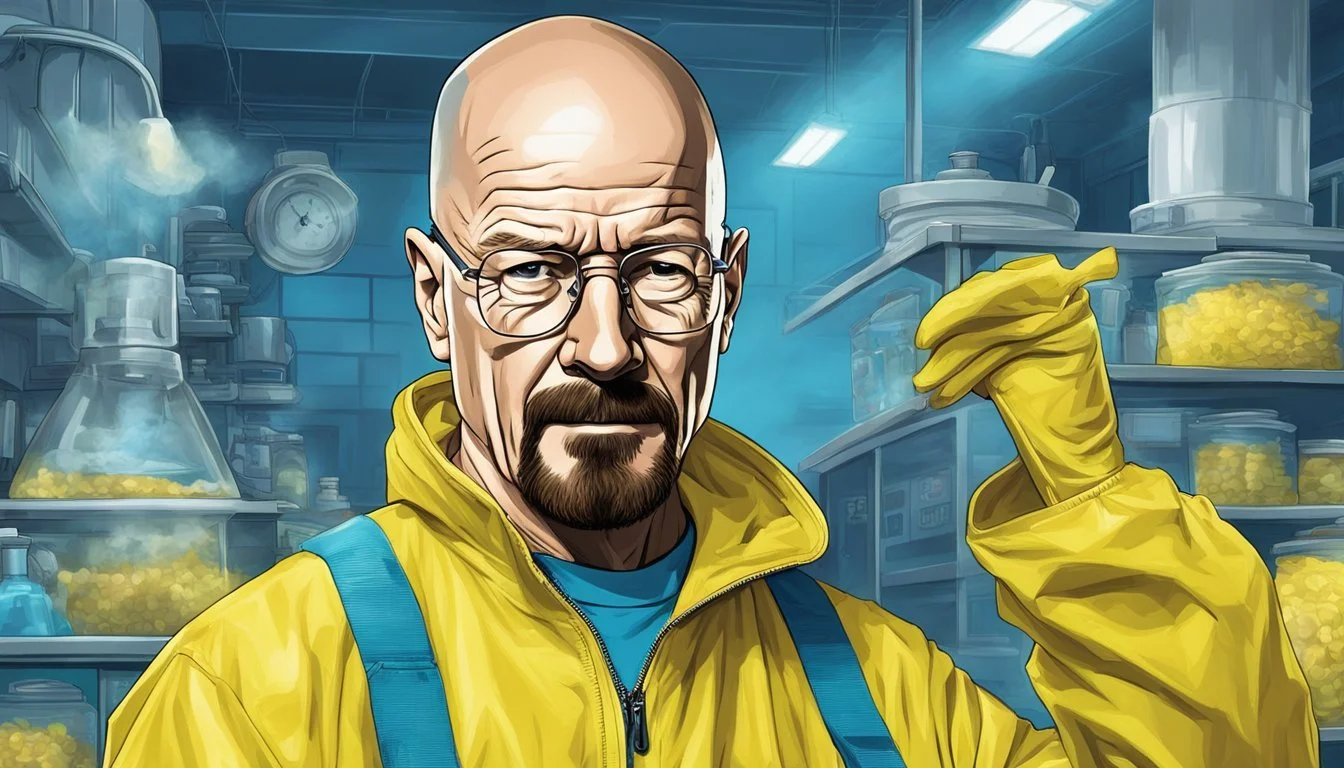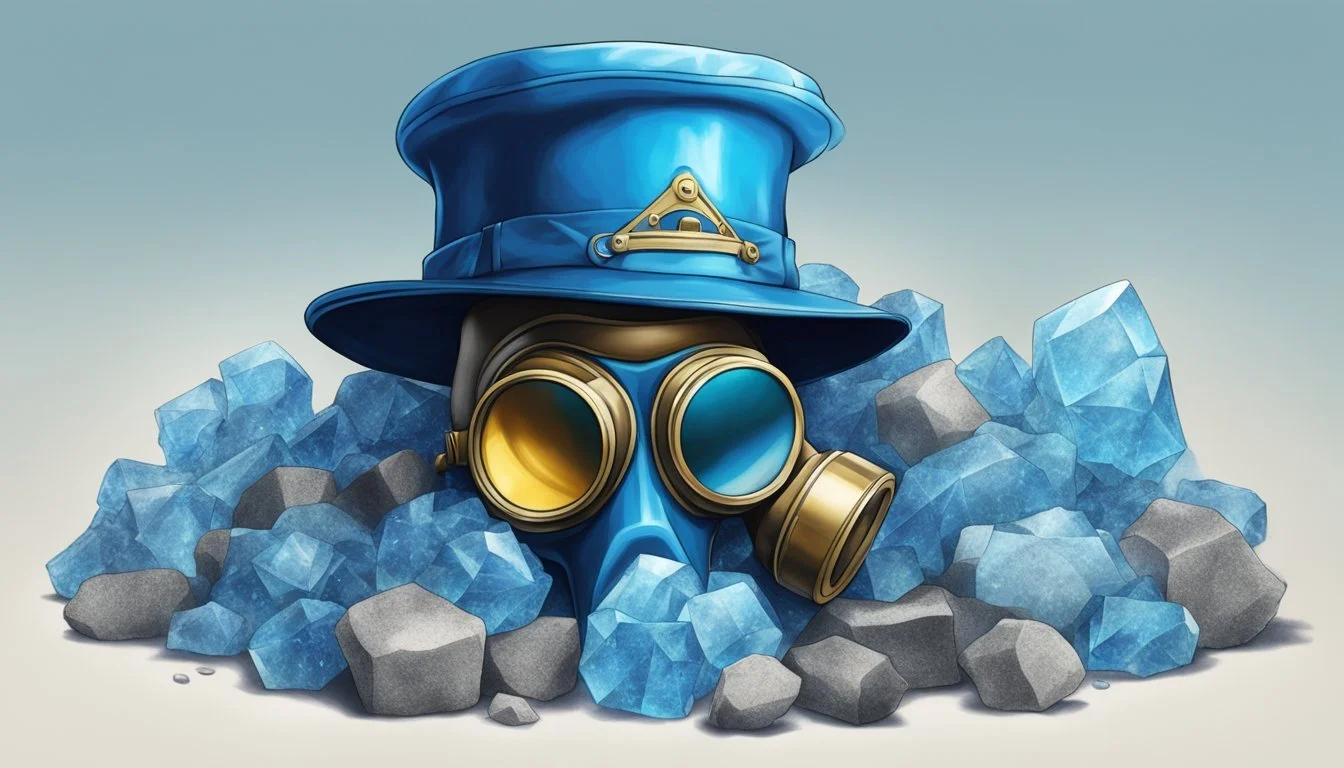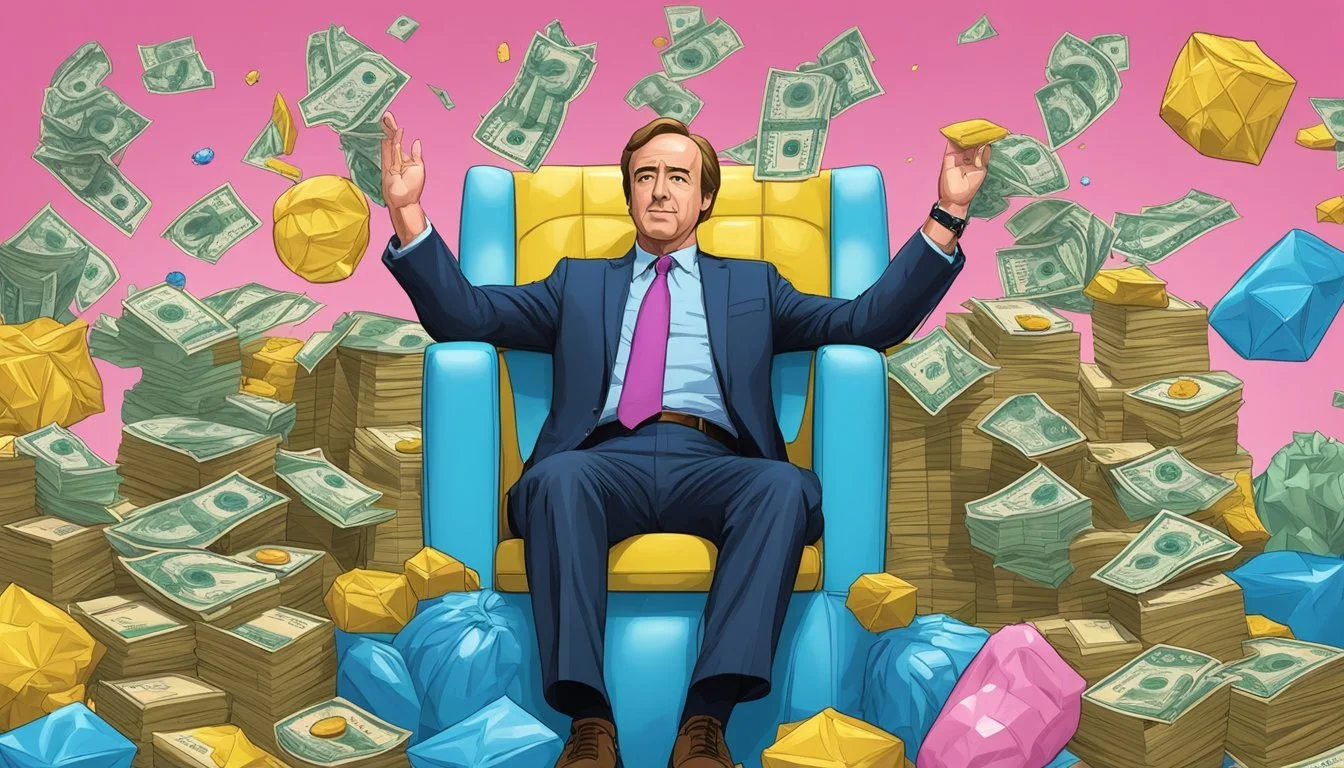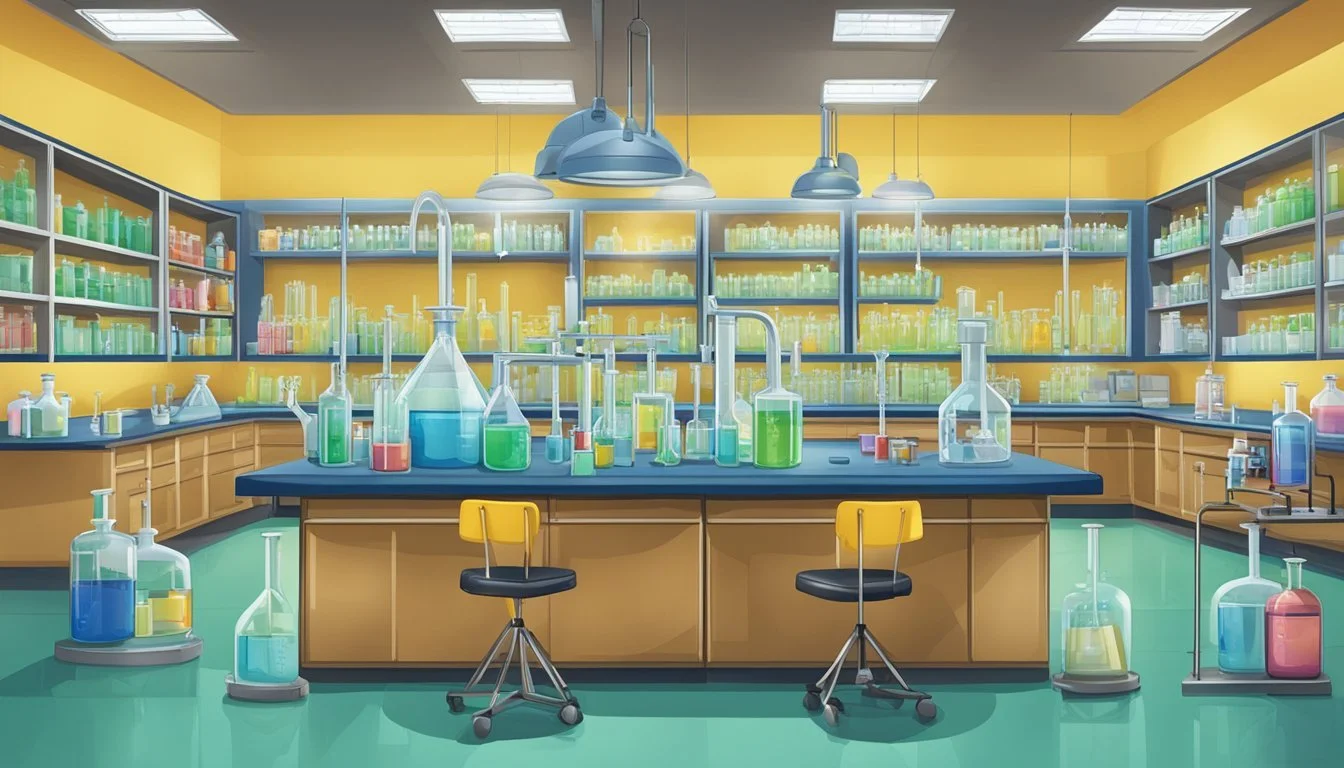10 Times Breaking Bad Used Symbolism Brilliantly
Visual Storytelling Mastery
Breaking Bad captivated audiences with its gripping storytelling and complex characters. The critically acclaimed series elevated television drama to new heights through its masterful use of visual elements and symbolism.
Breaking Bad's brilliant symbolism added layers of meaning that enriched the viewing experience. From color choices to recurring objects, the show's creators imbued seemingly mundane details with deeper significance. These symbolic elements reinforced themes, foreshadowed plot developments, and provided insight into characters' psychological states throughout the series.
1) The Pink Teddy Bear
The pink teddy bear emerges as a striking symbol in Breaking Bad's second season. This charred, one-eyed stuffed animal first appears floating in Walter White's pool during the season's cold opens.
Its vibrant pink color stands out against the show's typically muted palette, drawing viewers' attention. The bear's damaged state foreshadows the tragic consequences of Walt's actions and choices.
The teddy bear is connected to the Wayfarer 515 plane crash, which occurs above Albuquerque. This event is indirectly caused by Walt's decisions, linking the bear to the wider impact of his criminal activities.
Throughout the season, the bear serves as a visual reminder of the innocence lost and lives destroyed in Walt's pursuit of power. Its single eye seems to watch Walt, symbolizing his growing guilt and the moral scrutiny he faces.
The bear's appearances in black-and-white flashforwards, where only it retains its pink color, emphasize its significance. This clever use of color highlights the bear's role as a harbinger of the dark events to come.
2) Walter White's Hat
Walter White's pork pie hat becomes a powerful symbol of his transformation into the criminal alter ego Heisenberg. The hat first appears when Walt purchases it to disguise himself during a drug deal.
As Walt dons the hat, he visibly changes his demeanor, standing taller and speaking more assertively. This physical transformation mirrors his internal shift from meek chemistry teacher to ruthless drug kingpin.
The hat's color also carries symbolic weight. Its black hue represents the darkness and moral ambiguity Walt embraces as Heisenberg. When wearing it, Walt fully embodies his criminal persona.
Interestingly, in flash-forward scenes, Walt is seen wearing a white hat instead. This color change may symbolize a return to his former self or a desire for redemption.
The pork pie hat's historical associations with jazz musicians and working-class men add layers of meaning to Walt's character. It suggests both creativity and a connection to ordinary people, despite his extraordinary circumstances.
3) The Fly
The fly episode in Breaking Bad is a masterpiece of symbolism. It focuses entirely on Walt and Jesse in their lab, trying to catch an elusive fly.
This insect represents Walt's growing paranoia and obsession with perfection. As he futilely chases the fly, it mirrors his increasingly desperate attempts to control every aspect of his life and work.
The fly also symbolizes Walt's guilt over Jane's death. His inability to catch it reflects his struggle to come to terms with his actions and maintain control over his conscience.
For Jesse, the fly represents a chance to connect with Walt. Their shared pursuit brings them closer, highlighting the complex nature of their relationship.
The confined setting of the lab emphasizes the claustrophobic nature of their situation. As they become more entangled in the drug world, their options narrow, much like their physical space in this episode.
This seemingly simple plot device manages to convey deep character insights and foreshadow future events. It showcases Breaking Bad's ability to use subtle symbolism to enhance its storytelling.
4) The Broken Plate
In Breaking Bad, the broken plate serves as a powerful symbol of Walt's transformation and the consequences of his actions. This seemingly mundane object takes on deep significance in a pivotal scene.
During a tense family dinner, Walt Jr. becomes ill and rushes to the bathroom. As Skyler follows to help, Walt is left alone with the plates of food. In a moment of frustration, he picks up his plate and smashes it on the floor.
The shattered plate represents Walt's fractured family life and the irreparable damage caused by his choices. It symbolizes the breaking point in his relationships and the destruction of his former identity as a mild-mannered chemistry teacher.
The yellow color of the plate is also meaningful, echoing the show's use of color symbolism. Yellow often represents caution or hazard, foreshadowing the dangers that lie ahead for Walt and his loved ones.
This scene marks a turning point, illustrating Walt's growing aggression and his inability to maintain the facade of normalcy. The broken plate becomes a visual metaphor for the broken trust and shattered illusions within the White household.
5) Saul's Inflatable Statue
Saul Goodman's office in Breaking Bad features a prominent inflatable Statue of Liberty. This eye-catching prop serves as a powerful symbol of Saul's character and legal practice.
The inflatable statue represents Saul's flashy, over-the-top personality and his tendency to draw attention to himself. It reflects his unconventional approach to law and his willingness to bend rules.
The Statue of Liberty is typically associated with freedom and justice. By using an inflatable version, the show suggests Saul's flexible interpretation of these ideals. It implies he offers a cheapened, commercialized version of liberty to his clients.
The statue's placement in Saul's office also serves as a visual reminder of his role as a "criminal" lawyer. It hints at the irony of his practice, where he often helps guilty clients evade justice rather than upholding the law.
This symbol effectively encapsulates Saul's complex character. It demonstrates how Breaking Bad uses seemingly simple objects to convey deeper meanings about its characters and themes.
6) Gale's Playbook
Gale Boetticher's lab notes serve as a powerful symbol in Breaking Bad. This meticulously detailed notebook reflects Gale's scientific precision and dedication to his craft.
The playbook contains intricate drawings, formulas, and observations related to meth production. It symbolizes the intellectual side of the drug trade, contrasting with the violence often associated with it.
When Hank discovers the notebook, it becomes a crucial piece of evidence. The inscription "To W.W." sparks suspicion about Walter White's involvement, demonstrating how even small details can have far-reaching consequences.
The playbook also represents the connection between Walt and Gale. It highlights their shared passion for chemistry and the purity of their product, setting them apart from other meth cooks.
Ultimately, Gale's notes symbolize the thin line between genius and criminality in the world of Breaking Bad. They showcase how scientific knowledge can be twisted for illegal purposes, blurring ethical boundaries.
7) The Cracked Duck
The cracked duck figurine in Breaking Bad serves as a potent symbol of Walter White's transformation. This ceramic ornament first appears in the White family home, representing the innocence and stability of Walt's pre-Heisenberg life.
As the series progresses, the duck becomes damaged, mirroring Walt's moral decay. The crack in the ornament grows more pronounced, symbolizing the widening rift in Walt's relationships and his increasing detachment from his former self.
The duck's placement in various scenes is deliberate, often appearing during pivotal moments in Walt's journey. Its presence serves as a visual reminder of what Walt has lost and how far he has strayed from his initial motivations.
By the end of the series, the cracked duck stands as a poignant metaphor for the irreparable damage Walt has inflicted on his family and himself. Its fractured state reflects the broken pieces of Walt's life that can never be fully mended.
8) The Lily of the Valley Plant
The lily of the valley plant serves as a powerful symbol in Breaking Bad, representing Walt's descent into darkness. This seemingly innocent flowering plant plays a crucial role in a pivotal moment of the series.
Walt uses the lily of the valley to poison Brock, Jesse's girlfriend's son. The plant's beautiful appearance belies its toxic nature, much like Walt's outward persona masks his inner ruthlessness.
By choosing this particular plant, the show's creators draw a parallel between Walt and the flower. Both appear harmless on the surface but harbor deadly potential beneath.
The lily of the valley traditionally symbolizes purity and salvation. In Breaking Bad, it ironically marks Walt's full transformation into the series' antagonist. This subversion of the plant's typical meaning underscores the show's theme of moral decay.
The use of this plant also highlights Walt's cunning. He exploits its sweet-tasting berries and relative obscurity to carry out his plan undetected. This strategic thinking showcases Walt's evolution from a chemistry teacher to a calculating criminal mastermind.
9) The RV
The RV in Breaking Bad serves as a powerful symbol throughout the series. It represents Walt and Jesse's entry into the world of methamphetamine production and their initial partnership.
As their mobile lab, the RV embodies the confined space of their criminal enterprise. Its cramped interior mirrors the limitations of Walt's previous life and foreshadows the dangerous path he's chosen.
Over time, the RV's deteriorating condition reflects the characters' moral decay. Dents, rust, and mechanical failures accumulate, mirroring Walt and Jesse's increasingly compromised ethics.
The RV's ultimate destruction in season three marks a significant turning point. It symbolizes the end of Walt and Jesse's early days in the drug trade and their transition to larger-scale operations.
Throughout its appearances, the RV serves as a visual reminder of how far the characters have come from their humble beginnings. Its presence evokes memories of their initial naivety and the consequences of their choices.
10) Blue Meth
The blue meth in Breaking Bad stands as one of the show's most iconic symbols. Its distinctive color represents the exceptional purity of Walter White's product, setting it apart from typical street drugs.
The vibrant blue hue signifies the chemistry expertise Walt brings to his illicit enterprise. It becomes a visual shorthand for the quality and potency of his creation, quickly recognizable in the criminal underworld.
Beyond its literal representation, the blue meth symbolizes Walt's transformation. As the product gains notoriety, it parallels his descent into the drug trade and his growing reputation as Heisenberg.
The color blue also carries deeper meanings throughout the series. It often appears in moments of moral ambiguity or when characters face pivotal decisions, mirroring the complexities of their choices.
As the blue meth spreads, it becomes a testament to Walt's impact on the drug market. Its presence in various locations illustrates the far-reaching consequences of his actions and the ripple effects of his choices.
The Duality of Walter White
Walter White's character embodies the concept of duality throughout Breaking Bad. His transformation from a mild-mannered chemistry teacher to the ruthless drug lord Heisenberg showcases the stark contrast between his two personas.
Colors and Costumes as Symbols
The show's use of colors and costumes brilliantly emphasizes Walter White's duality. In his everyday life as a teacher, Walter often wears muted colors like beige and khaki, reflecting his unassuming nature and blend-into-the-background personality.
As he transitions into Heisenberg, Walter's wardrobe shifts dramatically. He dons darker colors, particularly black, symbolizing his descent into the criminal underworld and the darkening of his moral compass.
The iconic pork pie hat and sunglasses serve as a visual representation of Walter's alter ego. When he puts on this "costume," he becomes Heisenberg - confident, dangerous, and intimidating.
The color green plays a significant role in Walter's journey. It appears in moments of growth and change, often when Walter is making crucial decisions that push him further into his Heisenberg persona.
The Use of Chemistry Metaphors
Breaking Bad cleverly incorporates chemistry metaphors throughout the series to enhance storytelling and character development. These scientific references serve as a reflection of Walter White's expertise while also illuminating deeper themes.
Chemical Reactions in the Plot
Walter White's background as a chemistry teacher provides a natural basis for chemical metaphors. In the pilot episode, he describes chemistry as "the study of change," foreshadowing his own dramatic transformation. This metaphor extends to the characters' interactions, with their relationships mimicking chemical reactions.
The show frequently uses chemical terminology to describe plot developments. Walt and Jesse's meth cooking process serves as an allegory for their evolving partnership. The purity of their product reflects the strength of their bond, while contaminants represent outside threats.
Chemical elements also symbolize character traits. Walt adopts the alias "Heisenberg," named after the physicist known for the uncertainty principle. This reflects Walt's increasingly unpredictable nature as the series progresses.
The concept of chemical change applies to moral decay as well. Walt's descent into criminality parallels the breakdown of complex molecules into simpler, more volatile compounds.









